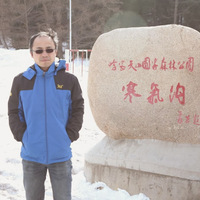In August 2016, the participants of the Russian-Chinese archaeological expedition excavated the Soviet Way-1 settlement which is located near the village of the same name in the Loktevsky district of the Altai Territory. In the course of...
moreIn August 2016, the participants of the Russian-Chinese archaeological expedition excavated the Soviet Way-1 settlement which is located near the village of the same name in the Loktevsky district of the Altai Territory. In the course of field works, besides the fragments of ceramics and osteological material, numerous evidence of bronze casting production (ore, slag, splashes, etc.) was found. In addition, metal objects supplementing information on the cultural layer of the ancient monument were found. The main purpose of the research was to conduct X-ray fluorescence analysis of the findings for further objective reconstruction of one of the specialized activities of the Altai foothills in the periods of Developed and Late Bronze. This approach was realized for the first time. A portable ALPHA SERIES™ spectrometer (model Alfa-2000, USA) was used for this purpose, along with the pocket portable computer and a test stand. This device is intended for quantitative non-destructive determination of the content of chemical elements by X-ray fluorescence spectrometry in samples of non-ferrous metals and alloys, as well as for monitoring of the chemical composition of ores and slags, liquid and powder samples. It allows testing of archaeological finds with the help of two computer programs ("Analytical" and "Mining"). The first program ensured the possibility to obtain quantitative indicators on the chemical composition of the twenty metal objects which were recorded in the Soviet Way-1 settlement. The second was used to study the finds of ore and slag from the same monument. As a result of the analytical work, a series of data has been generated this allows us to outline the possibilities to reconstruct the bronze casting process. The raw materials were extracted at the nearest deposits of the so-called snake-ore ore zone of the northwestern foothills of Altai. This is evidenced by a fixed set of characteristic elements in ore, slag and products. Melting was carried out directly at the settlement. The found billets ("cake", ingot) turned out to be bronze. They were intended for melting and pouring into molds already prepared according to the recipe of metal and could be used as an exchange product. From the copper obtained from local ore, various objects were made, the fragments of which were found in the settlement. Further excavations of the Soviet Way-1 monument have significant prospects. Such an archaeological complex with massive traces of bronze casting production, with remnants of dwellings and other buildings will provide a solution to the pressing problems of the ancient history of the population of the southern Ob-Irtysh interfluve. The obtained set of indices of X-ray fluorescence analysis forms the basis for a comparative analysis of numerous finds from non-ferrous metals on the territory of Western Siberia and the nearest regions.
